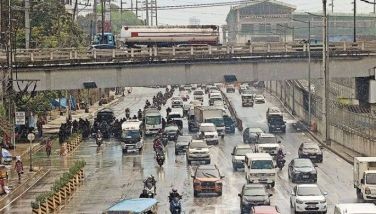News Analysis: High jobless rate remains problem despite growth
MANILA, Philippines (Xinhua) - Out of a population of 100 million, some 11.8 million Filipinos are still jobless and there is an increasing pessimism among them of finding gainful employment soon, according to a recent survey conducted by a reputable survey firm in Manila.
The survey done by the Social Weather Stations (SWS) from June 27 to 30 showed that the jobless rate for the second quarter was 25.9 percent, barely changed from the 25.7 percent in the first quarter of the year, or 11.5 million jobless Filipinos.
The latest figure, however, is still below the record high of 34.4 percent unemployment rate in March 2012.
The definition of the SWS of joblessness covers respondents aged 18 and above who are without jobs at present and are looking for work. This excludes those not looking for a job such as housewives, students and retired or disabled persons.
The government's definition of unemployment differs from that of the SWS. The government's Labor Force Survey (LFS), which includes persons 15 years and above who are not working, are looking for work and available for work, showed the jobless rate in April at only 7 percent, or 2.92 million Filipinos.
The SWS said that if the availability requirement is included, the adult joblessness in June would still be at 15.2 percent, or an estimated 6.1 million Filipinos.
Analysts here said that the unemployment problem in the Philippines could worsen after the Philippine government decided to repatriate thousands of overseas Filipino workers (OFWs) from Libya, a country now wracked by lawlessness where rival militias, including Islamist groups, are battling for control of key population centers such as Benghazi and Tripoli.
According to the Department of Foreign Affairs (DFA), they have already ferried some 800 Filipino workers from Libya to Malta where they will take a chartered plane for the trip to Manila. Some 400 workers have already arrived in Manila from Malta.
The DFA said that they have decided to order the repatriation of all Filipinos from Libya after one Filipino construction worker was beheaded and another female nurse was abducted and gang-raped. There are more than 10,000 Filipinos, mostly skilled workers, in Libya.
Most of the Filipino migrant-workers, however, have decided to take their chances in Libya rather than return to the Philippines where there are no jobs, according to the DFA.
Even the World Bank and the Manila-based Asian Development Bank (ADB) have cited the country's joblessness and continued poverty despite a remarkable 7.2 percent growth in gross domestic product (GDP) last year.
In a recent report, the World Bank said the country's economic growth has benefitted only the top 20 percent of the population, while almost a quarter of the population lives beneath the poverty line, earning less than P16,841 (about $386) a year.
The World Bank said that the figure has remained almost unchanged since 2006, despite the growing economy. It said that a larger labor force may not be good for unemployment, which is already around 7 percent (the government figure) but still among the highest in Asia.
It is estimated that between 2013 and 2016, around 1.15 million Filipinos will have entered the workforce a year, but only a fourth of them will find stable jobs, according to the World Bank.
As much as 75 percent of workers are employed in the informal sector, which means they have no protection from job losses - a figure that's likely to increase as the population surges, the World Bank said.
The country's seemingly endless political scandals are also affecting its growth prospects, with the World Bank, International Monetary Fund and other multilateral financial institutions revising their growth projections for the Philippines downward after the country's Supreme Court declared parts of a government stimulus package illegal.
The ADB said that the Philippine economy is still afflicted by chronic problems of high unemployment and under-employment, slow poverty reduction and low investment despite overall strong economic growth.
In fact, one-quarter of the Philippine work force is either unemployed or under-employed, the ADB said in one of its recent reports.
The ADB said that a country like the Philippines, with a large and growing low and moderate skilled workforce, cannot achieve transformational development with sluggish industrialization. It needs to develop stronger industrial base to enable the economy to "walk on two legs" of industry and modern services.
"Economic upgrading can take place if the higher productivity manufacturing sector absorbs labor from the low-productivity service and agriculture sectors," the ADB said.
- Latest
- Trending




























